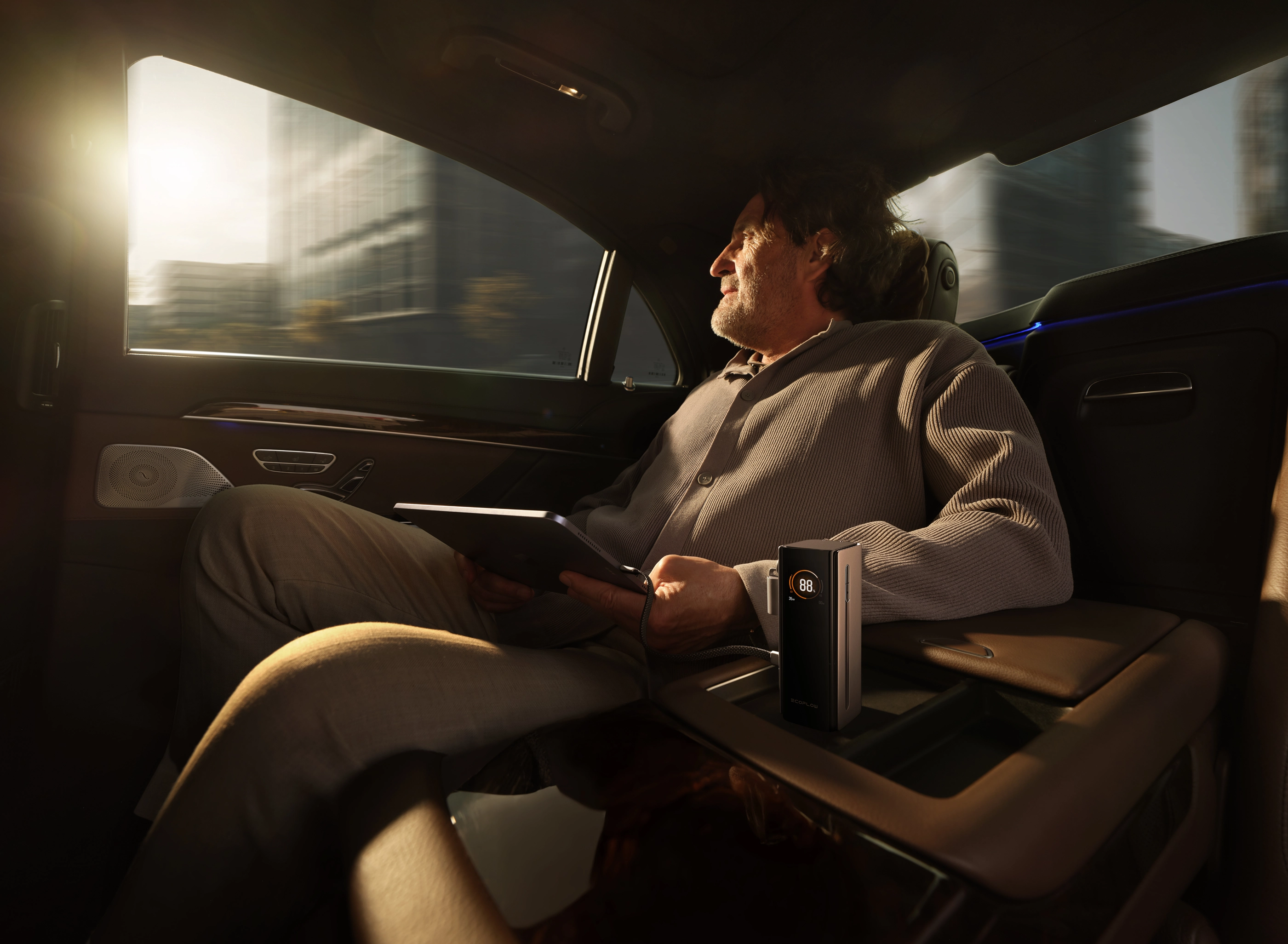Why Does My 100W Power Bank Still Charge My Laptop Slowly?
You purchased a powerful 100W power bank, an actual portable laptop charger power bank, and you'd hoped for super-speed charging in transit. You plug in the high-spec laptop, but charging is slow and underwhelming. It is a confusing and far-too-common occurrence that leaves you wondering whether the new device is faulty. In fact, the problem tends not to lie in a fault at all, but in a delicate technological handshake taking place in the background. Revealed here is exactly why your 100W power bank won't quite cut the mustard and what you should be keeping an eye out for.
The 100W Promise: Why It Matters for Laptops
Let's begin by defining why 100 watts is such a significant figure. Charging a laptop from a portable battery was, for years, a niche experience. The great majority of power packs simply did not have the wattage necessary to push more than a tablet or phone. The 100W barrier, communicated by way of USB-C, is a watershed. It is the highest power rating certified by the standard-specification USB Power Delivery spec and packs enough oomph to replenish the majority of today's laptops, even heavy Apple, Dell, and HP variants, at or near full speed.
What you pay for a 100W power bank is the promise of genuine productivity, the liberty of charging the one device essential for work wherever you are. It is the measure by which any serious portable power for laptops ought to be assessed. When therefore the promise fails to stand by you, knowing the technology of the power helps.
The Secret Handshake: How USB Power Delivery (PD) Works
The magic behind high-wattage charging is a protocol called USB Power Delivery (PD). Don't even consider it a power cord at this point—think of it more as a communications channel. When you plug a PD-compliant power bank into your laptop, it rapidly negotiates and determines the best and safest power level.
This dialogue occurs in milliseconds. The power bank reports the power profiles it can provide, which are fixed voltage and current combinations (e.g., 5V/3A, 9V/3A, 15V/3A, 20V/5A). Your laptop then reviews the possibilities and asks for the maximum profile it can handle safely. If you and your 100W power bank are in agreement on the 20V/5A profile, you receive 100W of power. In the event of a mismatch, they would default to a lower, common level and therefore would experience slower charging.
The Next Level of Smart Charging: Introducing PPS
Although the standard PD protocol is a great step in the right direction, it does have a weakness: rigidity in the power profiles. This can make it inefficient. When a battery is in a condition for which the optimal charging voltage is 18V, a generic PD charger is forced to deliver 20V. The internal circuitry in the laptop then has to turn the excess voltage into heat, and the device throttles charging speed for the safety of the battery. This is more often the cause of slow charging in reality.
Here comes a new standard in view: the Programmable Power Supply (PPS).
What is Programmable Power Supply (PPS)?
A PPS is a companion standard to the USB Power Delivery. While a charger in the standard mode is restricted to a few pre-set voltage steps, a charger capable of PPS can make very small, incremental adjustments in real time in the voltage and current. It can micro-adjust in increments of 20 millivolts (mV) and 50 milliamps (mA) or even smaller. This enables it to dynamically match the device's battery's exact power requirement at any instant.


How PPS Achieves Faster, More Efficient Charging
By delivering the precise voltage required, PPS minimizes the internal voltage conversion required in your laptop. This greatly diminishes energy lost in the form of heat. With less energy being released in the form of heat, a larger current is supported by the battery management system for a longer period before the speed must decrease. The ultimate result is a faster, cooler, and more efficient charging and also improved battery long-term durability.
Why Your Laptop and Phone Might Demand PPS
Numerous contemporary high-performance laptops and top-of-the-line Android smartphones (such as the Samsung Galaxy S line) have been optimized specifically for use by this technology. In order for them to reach their very best published charging rates, they need a charger or power bank capable of the PPS protocol. When you hook them up to a base 100W non-PPS power bank, they will still charge, but they automatically default down to a lower-rate non-PPS charging mode for safety, even if the device and the power bank are individually capable of 100 watts.
It's Not Just the Power Bank: Other Potential Speed Bumps
Despite the proper technology, others may hinder you. In the event you blame the power bank, check the common offenders first.
- The Cable is a Bottleneck: A USB-C cable is more than just a collection of wires-it includes a chip that communicates its capabilities. In order to achieve 100W charging, you need an e-marked (electronically marked) and 100W (or 5A)-rated cable. A lower-rated standard cable will cause a bottleneck, and the power bank will not push more current than the safe capabilities of the bottlenecked cable.
- Sharing Power Slows Down Speed: If your power bank has multiple ports, its total output is shared. Adding a second device, even a small one such as a phone, will make the power bank re-negotiate and decrease the wattage transmitted to your laptop in an attempt to remain within the total output.
- Your Laptop's Present State: Your laptops are intelligent. They themselves slow down the charging pace as the battery nears full (usually above 80%) in the interest of the health of the battery. Also, if you are running intensive operations such as playing games or video rendering, the laptop can channel power for them and slow down the charging.


Finding the Right Solution: What to Look For
To make sure you get the speed you were paying for, you should also look beyond the "100W" marking. The best power bank portable charger for someone who uses a laptop will have a clear set of specifications. It should specifically mark compatibility for the USB-PD 3.0 and the PPS. It should also have a high enough overall output so that multi-device charging does not compromise the main outlet.
A full solution also takes care of the cable problem. For instance, a current power bank such as the EcoFlow RAPID Pro Power Bank not only accommodates such protocols but also comes with a 100W in-built cable. That way, you won't have any guessing and you also know you have the suitable device for the quickest charging.
Get Faster Charging with the Right Power Bank
The enigma of a slow 100W charging power bank is far less often about a damaged product and more about a compatibility issue of next-generation charging technologies. 100W lays the foundation, but it is the complex communication of the USB-PD and the nuances of the PPS that reveal a device's full charging potential. Knowing these standards allows you to break free of the hype and make a discerning decision. A purchase of a power bank featuring the appropriate protocols, such as the highly capable EcoFlow RAPID Pro Power Bank with 230W overall output, provides you with the performance you require.